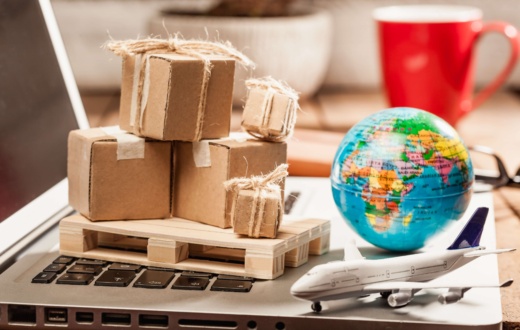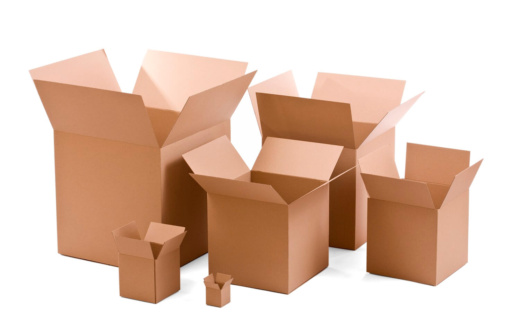Many different kinds of packaging materials are available in the market, such as carton boxes and corrugated boxes. However, not every type of packaging is suitable for all products and materials.
Therefore, it is important to be familiar with the major types of packaging so that you can choose the best one.
The purpose of this post is to differentiate bubble wraps, foam and honeycomb paper wraps packaging. Let’s start with some basics.
1. Bubble Wrap Packaging
Bubble wrap is considered to be one of the most popular packaging materials in the world. Lightweight, cost-effectiveness, and reliable protection are some of the many reasons why a huge majority of people prefer bubble wrap packaging to store and transport their products.
Over the years, a lot of different types of bubble wrap have been introduced in the market to provide maximum protection to various types of products and provide a reliable packaging material to different industries.
Generally, companies use bubble wrap rolls because they can easily be cut to length. You can also use bubble wrap of varying lengths to wrap different products.
For instance, the 40-micron wrap is used to protect light products, while the 75-micron wrap can be used to pack heavy and fragile items.
Benefits of Bubble Wraps
Bubble wrap is certainly the most reliable cushioning for fragile things. The bubbles of air allow the products to be suspended in the carton box so that the shock is absorbed, and the products are kept protected through the process of transportation.
Moreover, you can easily use bubble wrap to store and protect both small and large items. Companies also have the option of using perforated or non-perforated rolls depending on the kind of products.
2. What is Foam Packaging?
It would not be wrong to say that foam packaging is less popular than bubble wrap because not many people are familiar with the various benefits of foam packaging. However, such a type of packaging provides significant protection even when the thin foam is used.
Moreover, the air bubbles within the foam play a critical role in providing cushioning and maximum protection to the products.
Another benefit of foam is that it is non-abrasive and does not leave scratches or marks on the surfaces. You can use foam packaging for shiny items like metal, polished wood, and glass.
Best Type of Foam Packaging
Generally, polystyrene foam is considered to be the best type of foam because it acts as a cushion for fragile items. In addition, since the foam is thinner, you can wrap products and stack them to fit more products into a carton box. It also provides thermal insulation to temperature-sensitive products.
On the other hand, pre-cut foam sheets are best for stacking items that have to be packed together like glasses, mugs, and dishes. It will also help you save a considerable amount of packaging items, as you will be able to stack the items quickly.
Foam corners are typically used to transport larger items in a safe manner. A strong corrugated box with foaming will help in shock absorption and transferring the products safely.
Whether you select foam packaging or bubble wrap, you should be able to protect the items without adding too much weight to the carton box.
Benefits of Foam Packaging
A significant benefit of foam packaging is that it is thinner and lighter than bubble wraps. As a result, you can use it to store more items, even if the corrugated box of your choice is small.
It is reliable for shipping fragile items as well as large equipment.
3. Honeycomb Paper Wraps
Honeycomb paper wraps are another reliable packaging material because it is quite easy to stretch. Moreover, the extra softness of the honeycomb paper wraps offers much more flexibility than foam packaging. It provides the much-needed cushion protection to the materials and prevents scratching.
In comparison to bubble wraps, honeycomb paper wraps are more flexible and efficient because they do not need any extra tape to interlock the paper structure. However, the applications of such papers are limited compared to bubble wraps.
Generally, honeycomb paper wraps are used for smaller packaging. Small businesses like e-commerce start-ups can rely on it to ensure efficient packaging even if they do not have the space or resources to use bubble packaging or foam packaging.
Benefits of Honeycomb Paper Wraps
Since honeycomb paper wraps are an innovative and modern type of packaging, they will help your business stand out from the crowd and ensure higher customer satisfaction.
Honeycomb paper wraps, along with customized carton boxes, provide a unique branding opportunity to your business.
The Bottom Line
The comparison among bubble wraps, foam and honeycomb paper wraps shows that no one type of packaging works the best in all conditions. In fact, there are many similarities between these packaging materials.
Some of the factors that will help you in choosing the right material for packaging are:
- The efficiency of product protection
- Structural support
- Type of products you are dealing with
- The shape of the products
- The fragility of the products
In terms of the price, both foam and bubble wrap are cost-effective for the companies to do packaging on both small and large scale.
Honeycomb paper wraps, on the other hand, are much suitable for small-scale businesses. However, companies should also consider the kind of packaging material available locally to ensure they do not have to spend too much money on getting such material.
By considering these factors, you can choose between bubble wrap, honeycomb paper wraps, or foam packaging to ensure the products are stored and transported safely without any damage.







